The Clock Tower of Palace of Culture
How you can visit the Clock Tower?
At the beginning of the journey through the Palace of Culture, when I bought the tickets for visiting the museums housed by this historical building, I also made an appointment and paid the fee entrance for the guidance to the Clock Tower, that can only be access with a guide on a strict schedule that you can find out more about by reading Inside the palace of Culture ( you can read the article by clicking the blue writing ).
My friend and I appointment was scheduled for 13.45 PM and after we visited all the other galleries and rooms of this huge palace, we are back in the Hall of Honor and waiting for our guide to appear. There are also other few visitors waiting with us for the same thing.
Soon, the guide comes and shows the way to the elevator which gets all of us up to the roof of the palace, or to the attic of it.
Inside the palace's attic: the excitment of being here
At first we are walking through same halls and rooms of the palace’s attic which look kind of interesting because there is visible a metal and a wooden structure of the building, thus, the scenery reminds me of movie scenes, all of the set up being also very photogenic.
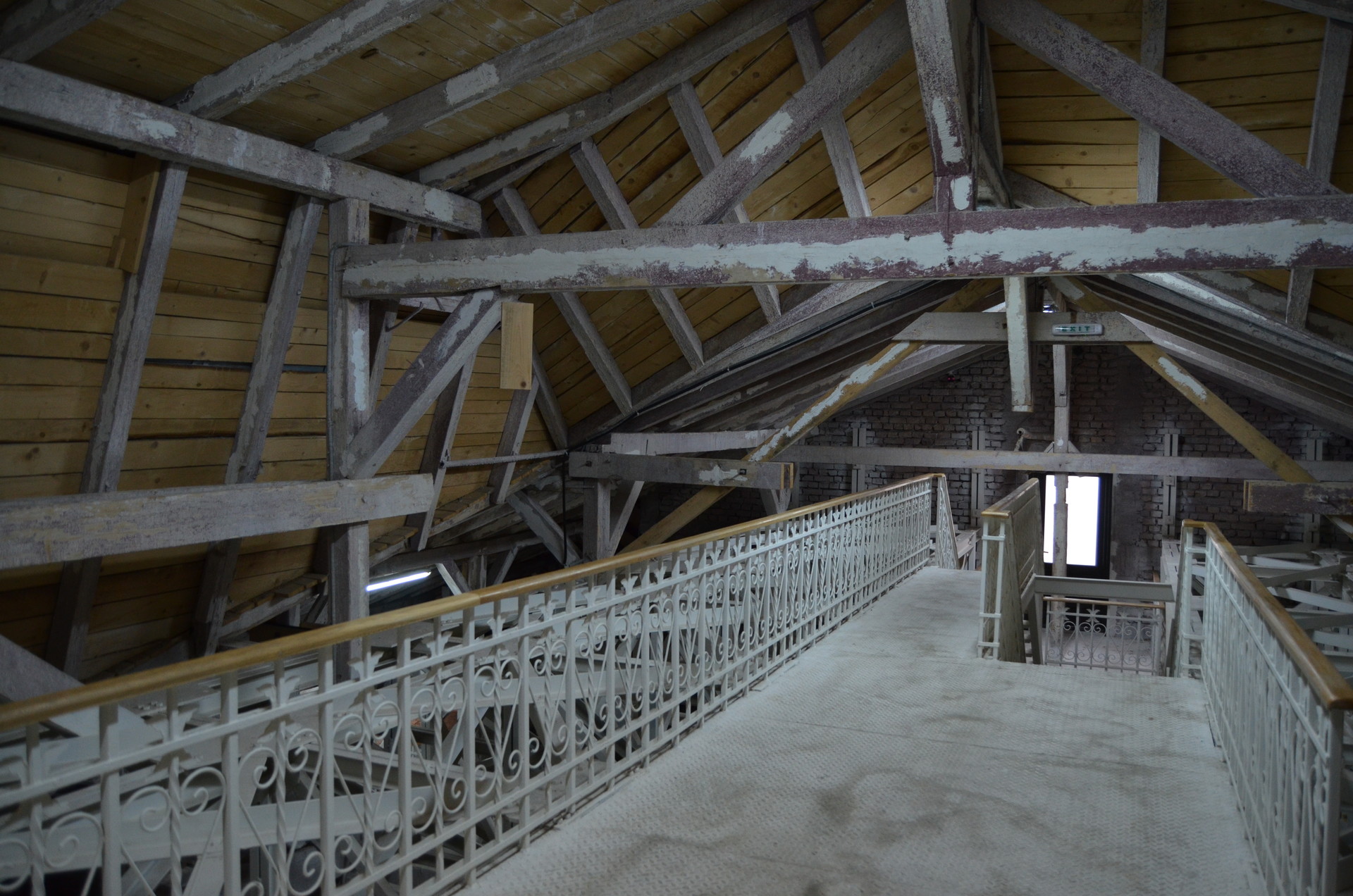
The room with the clock sophisticated mechanism
After going along to this portion of the palace, we finally reach the room where the clock mechanism is located, quite bright hall due to the strong light that is coming directly to the clock’s semi-transparent glass.

The walls of this room are white too and the combination with the entire red wooden structure supporting the clock mechanism give the place a clear atmosphere and also plenty of space that highlights the clock’s dials and its way of working.
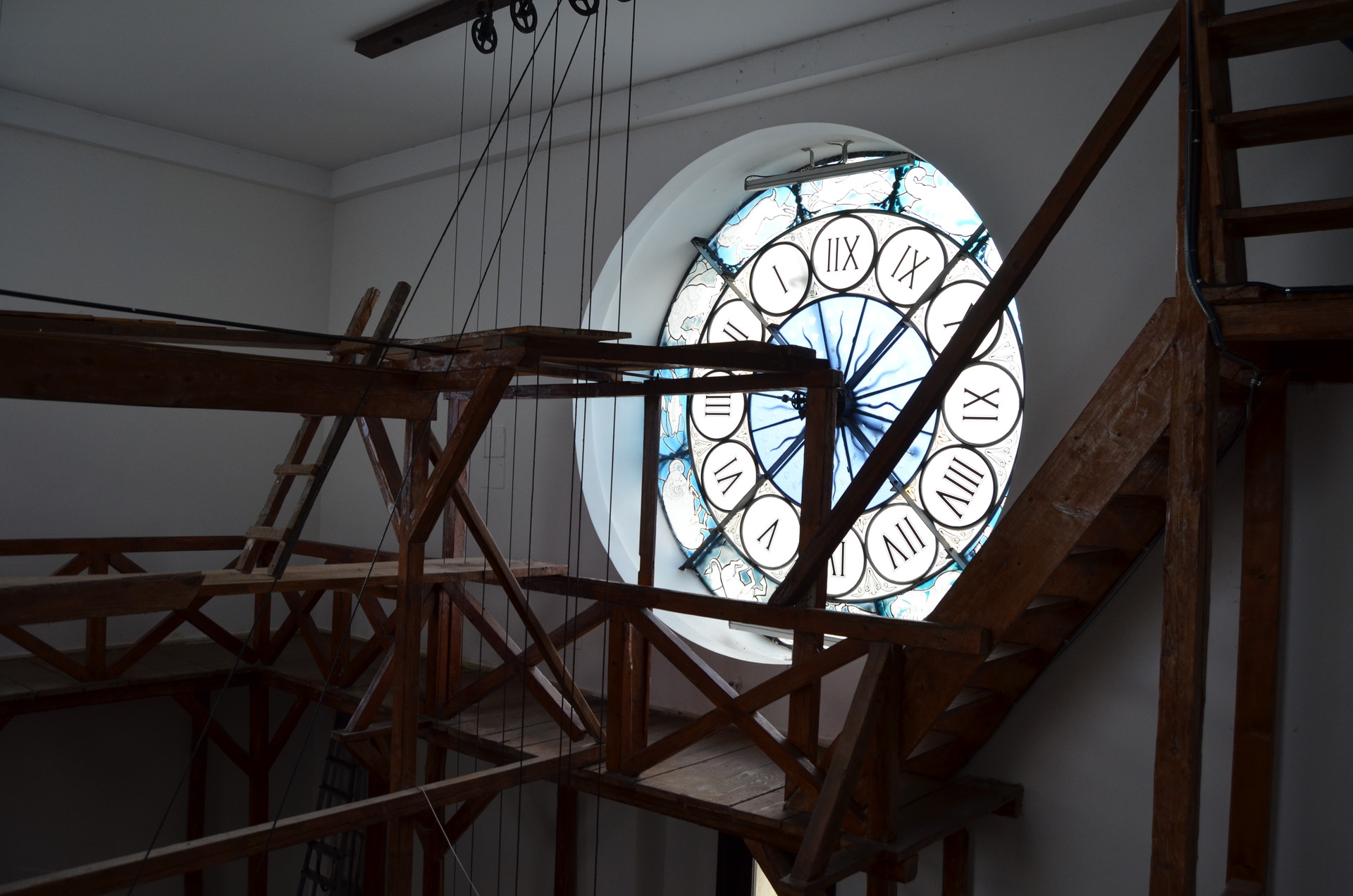
In time, the clock in the tower of the Palace of Culture has been contributing to the fame and elegance of the building. Historically speaking, the clock tower inherited the memory of the clock installed in the tower of the former Royal Court in 1728.
How is the clock working?
The guide starts to describe what we see. The clock has three dials, each of it having a diameter of around 3 meters. The clock mechanism positioned in the center of this room interestingly connects all of the three dials, being automatically loaded at a period of 12 hours with a weight of 120 kilograms that rises to a height of 8 meters.

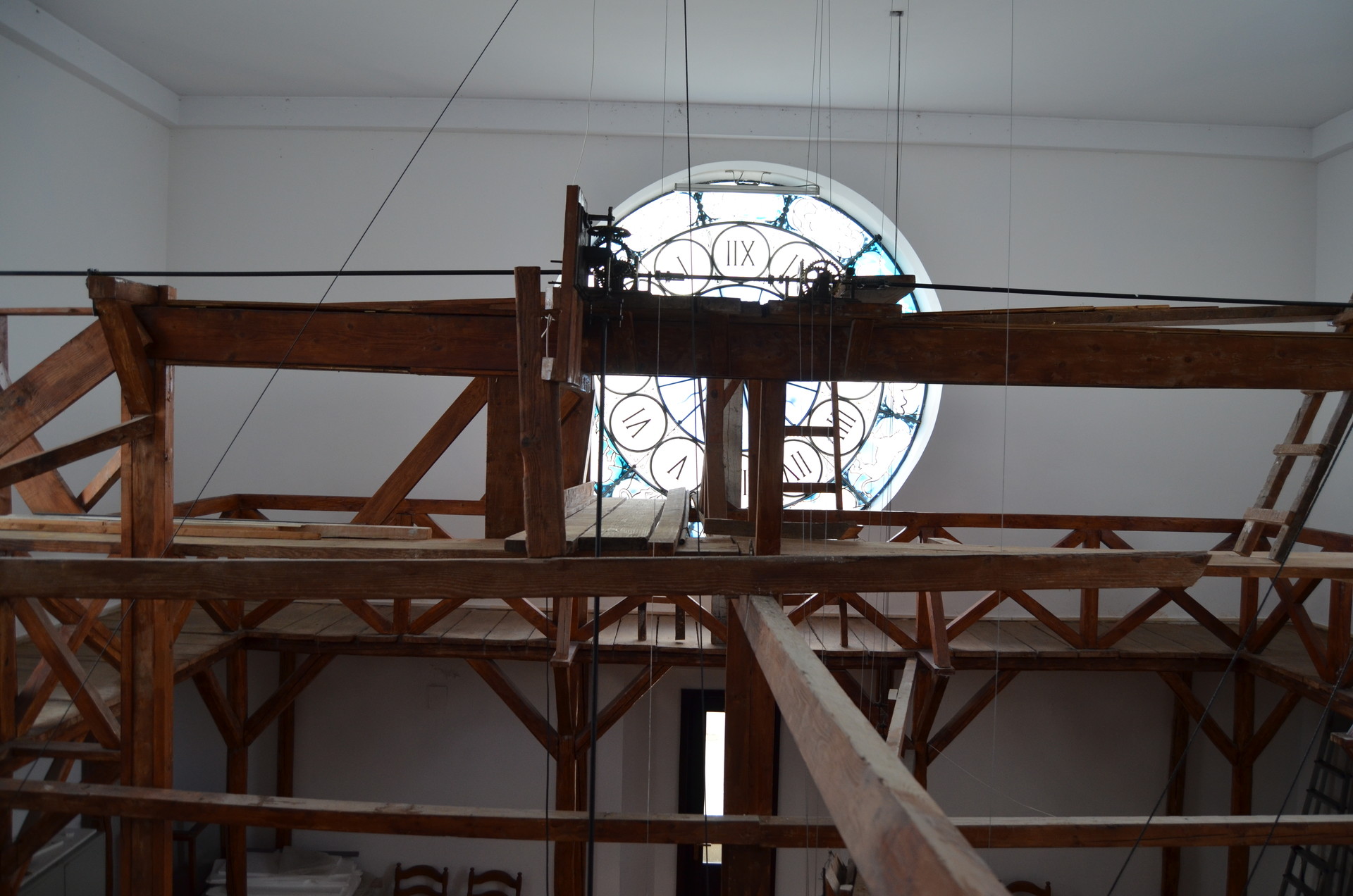
The stained-glass windows are decorated with the 12 signs of the zodiac. The most exciting part is that at every exact hour, the clock signs “Hora Unirii” – a Romanian important anthem and on the 4thfloor of the clock tower we are about to watch the song being played by a system of 8 tuned bells.
Going up on the 4th floor of the Clock tower through same steep stairs
We continue the guided tower by climbing the wooden stairs of the clock room which by the way gives us the opportunity to also see the mechanism of the clock from a different and attractive perspective and that gets us in the end to the hall where the bells system is found.
We are now on the 4th floor of the Clock Tower, the highest one. Here we get to discover the tuned bells I was talking about just a bit earlier. The walls of this hall are white too and soundproofed, the bells system being placed in the center of it.
The panorama over the city of Iasi
Our guide tells us that we still have to wait just a few minutes until the bells start signing and until then we can admire through the small openings of the construction various panoramas over the city of Iași: From up here, the view including the front square of the palace, namely “The Stephen the Great and Holy” which continues with the pedestrian boulevard is my favorite one. On the left side of the boulevard I can see the building of the Orthodox Moldovan metropolis and other churches which I am about to visit after finishing my journey through the Palace of Culture.
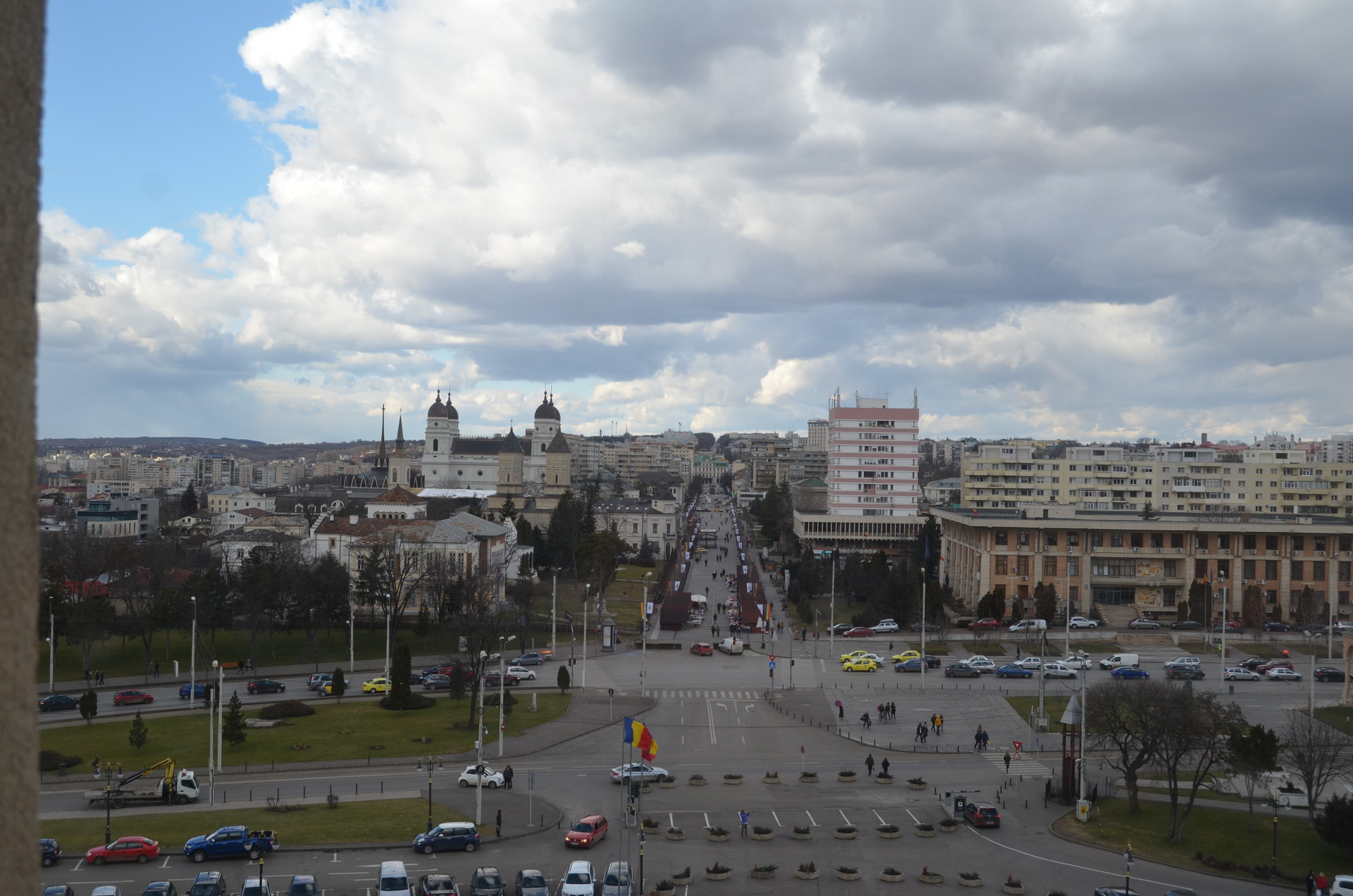
Hearing the bells singing: uncomfortable or pleasurable?
Suddenly, because is 2 o’clock, same small hammers start to ring in bells and all of us get a bit scared and surprised due to the very loud noise. But yeah, indeed, it is not just a noise, but we can very clearly to recognize the rhythm of the song “Hora Unirii” and watching how the sound is created just in front of us is like a marvellous experience.
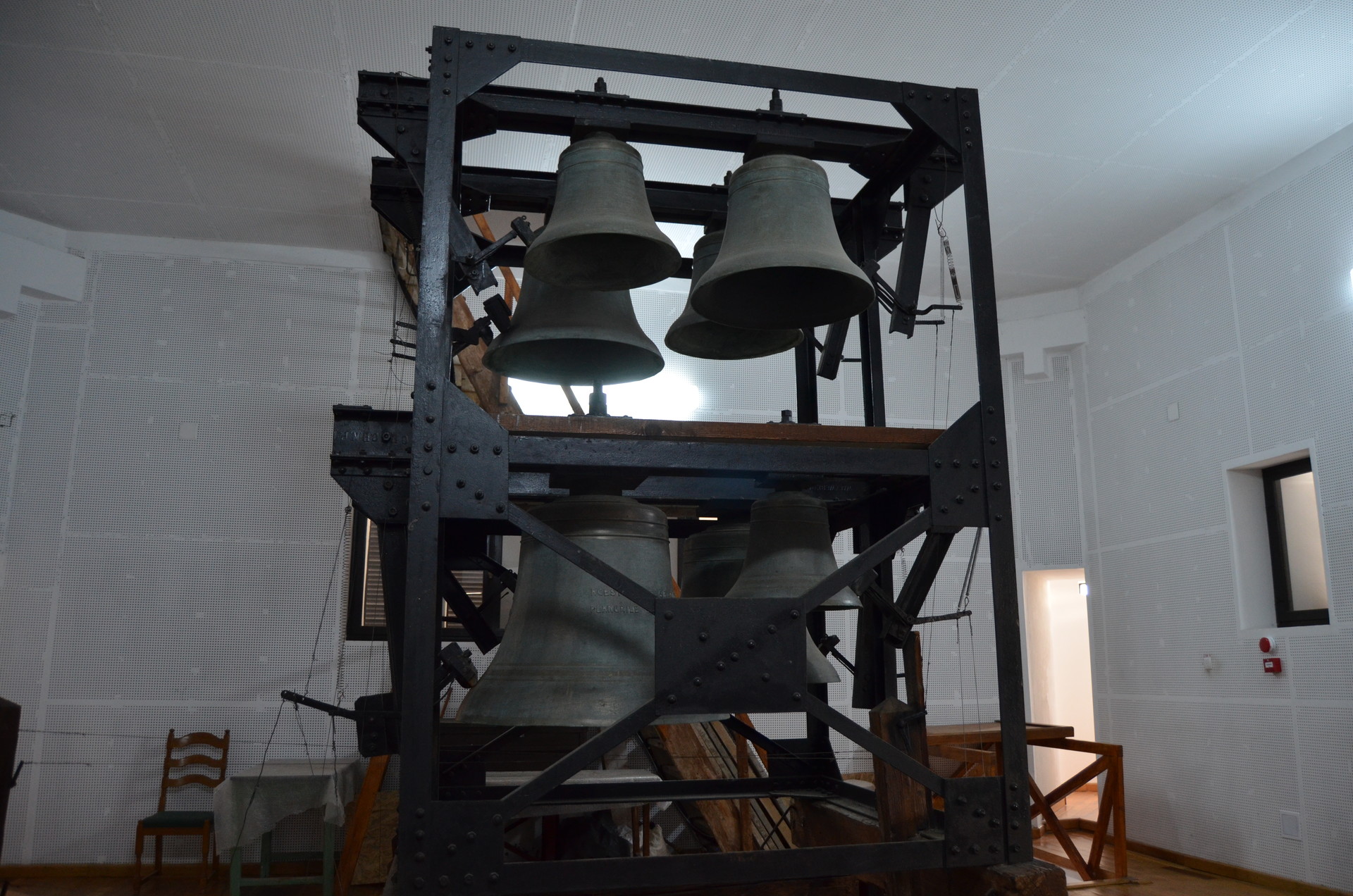
Before I got used to the loud sounds, I was feeling a little bit uncomfortable, but after same time I really enjoyed the unique moment. The song is remembering about the “Small Union” of 1859, when Wallachia and Moldovia were united under the rule of Alexandru Ion Cuza and also of the “Great Union” of 1918 when all of the Romanian regions were unified under the King Ferdinand I.
That's why the Clock tower has a strict schedule when it comes to the visiting hours
The visiting hours of the Clock Tower are scheduled in the way of giving the people the opportunity to take part in a curious and unique experience offered by the ringing of the clock’s bells. Thus, that’s why the guided tour begins only at an exact hour, with 15 minutes before a sharp hour.
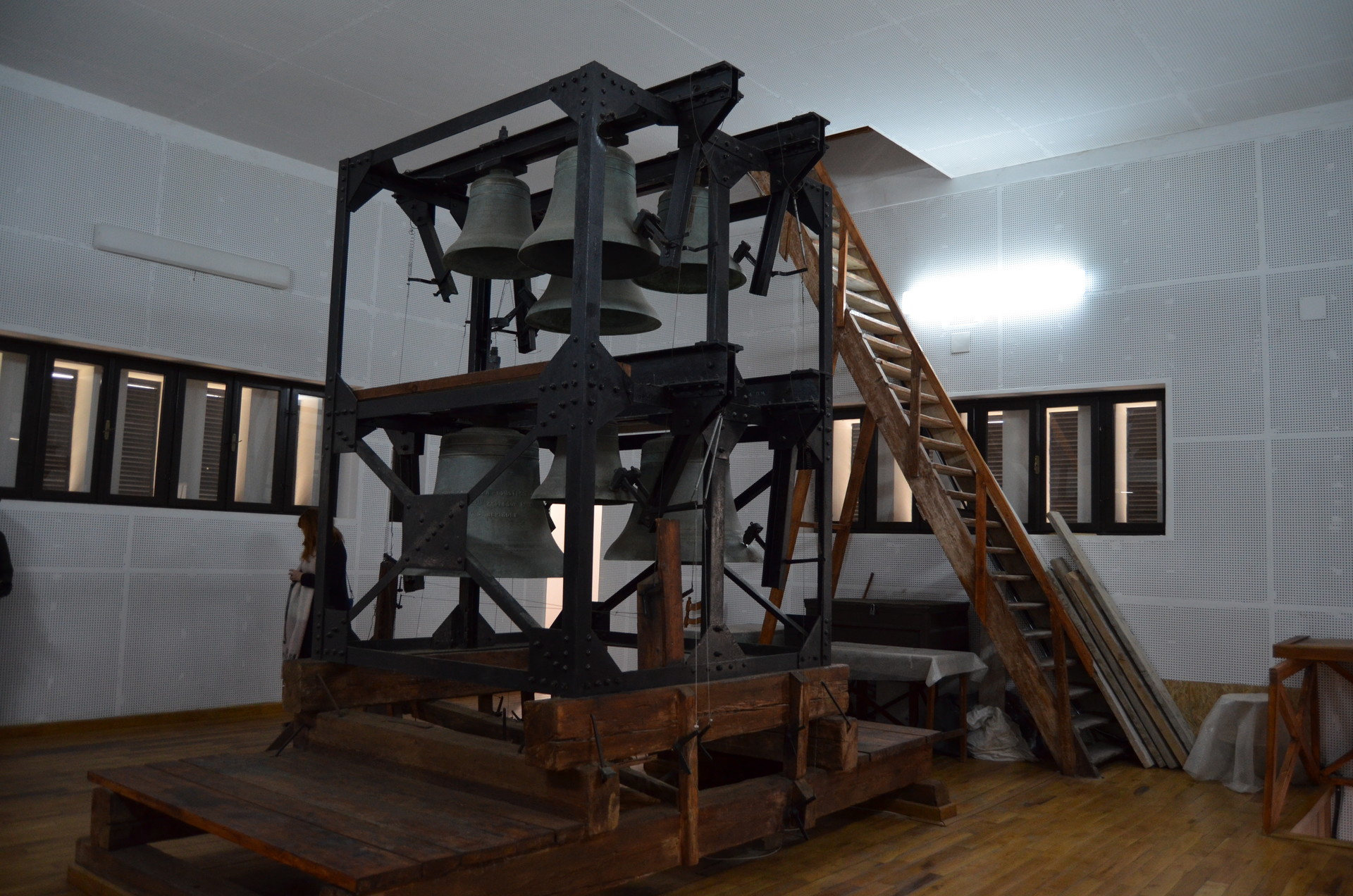
Recommended or not?
If you are planning to visit the Palace of Culture Iași, I encourage you to make time to also experience the Clock Tower and the singing of the 8 tuned bells. If you are Romanian than, the feeling you get when the „Hora Unirii” is starting might be a little bit emotional and, otherwise, you will still get impressed by what is happening there.
How much it costs to take a guided tour through the Clock Tower?
The entrance fee for visiting the Clock Town is 16 lei – meaning 3 euros, but if you are a student you get a discounted ticket, paying a cost of 4 lei, which is about less than 1 euro. So basically, there is no reason for not giving this destination a try, plus, did I mention that the Clock Tower is one of the landmarks of the city of Iași?
Photo gallery
Want to have your own Erasmus blog?
If you are experiencing living abroad, you're an avid traveller or want to promote the city where you live... create your own blog and share your adventures!
I want to create my Erasmus blog! →


























Comments (0 comments)